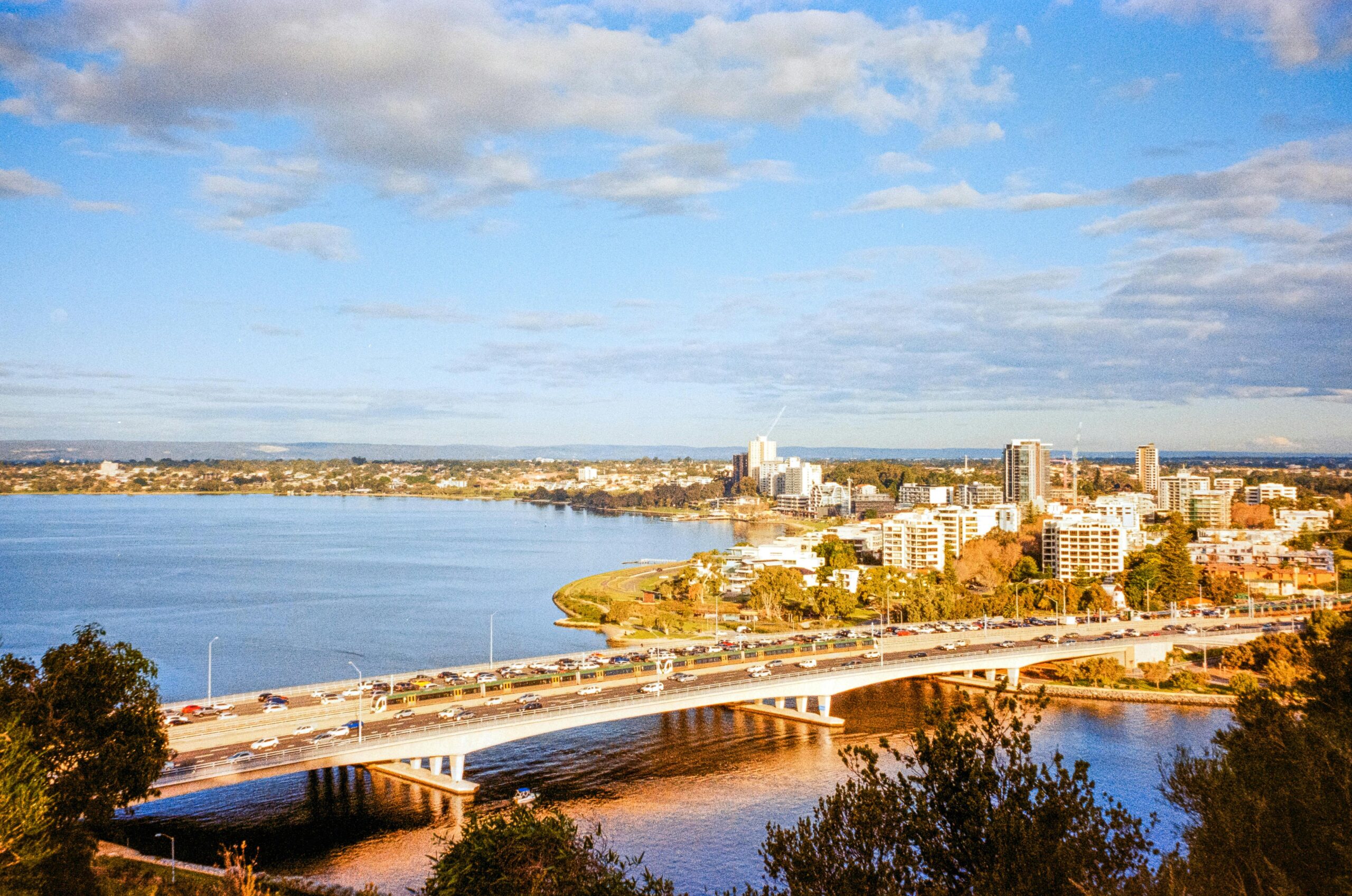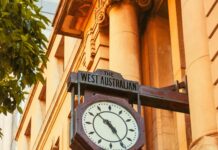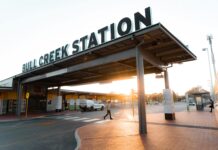Are you tired of battling the daily Perth traffic congestion that seems to never end? Navigating through Perth’s busy roads can be a real headache, especially during peak hours when the city streets are jam-packed with vehicles. But what makes traffic in Perth so problematic compared to other Australian cities? In this blog, we will uncover the hidden reasons behind the increasing traffic jams in Perth and explore effective solutions that could transform your daily commute. From the impact of urban development on Perth road traffic to the latest updates on public transport options in Perth, there is much to discover. Have you ever wondered why some routes are always slower, or how new infrastructure projects might ease the gridlock? You’re not alone. The rise in population combined with limited road capacity has made Perth traffic management a hot topic among residents and city planners alike. Stay tuned to learn about the most recent trends, including smart traffic technologies and sustainable transport initiatives that are shaping Perth’s future. Curious about how you can avoid the worst traffic spots or find the quickest routes during rush hour? Keep reading to unlock insider tips and must-know facts about mastering traffic flow in Perth.
Top 7 Insider Tips to Beat Perth Traffic Congestion During Peak Hours
When it comes to Perth traffic jams and the general chaos on the roads, well, it’s a bit of a mixed bag. Some days, you’ll sail through like a breeze, and other days, it feels like you’re stuck in an eternal snarl-up. Not really sure why this matters, but if you’re a local or visiting, knowing the ins and outs of Perth traffic congestion can save you hours of frustration — or at least that’s the dream.
First things first, let’s talk about the main trouble spots. The city centre, especially around the Mitchell Freeway and Graham Farmer Freeway, tends to get pretty messy during peak hours. You’ll often find yourself inching along, wondering if you’ll ever reach your destination. Here’s a quick table to show some of the busiest times and places where Perth road traffic likes to pile up:
| Road/Area | Peak Time | Typical Delay | Notes |
|---|---|---|---|
| Mitchell Freeway | 7am – 9am, 4pm-6pm | 15-30 minutes | Heavy inbound in the morning |
| Graham Farmer Freeway | 7am – 9am, 4pm-6pm | 20-40 minutes | Outbound congestion afternoons |
| Great Eastern Highway | 8am – 10am | 10-25 minutes | Mainly near city outskirts |
| Canning Highway | 5pm – 7pm | 15-35 minutes | Evening commute bottleneck |
If you ever think, “I’ll just take a back road to avoid this mess,” think again. Back roads, or “rat runs” as some call them, are sometimes just as bad, especially because locals use them as shortcuts. Maybe it’s just me, but I feel like these detours just add more confusion and sometimes make the whole trip longer. The irony, eh?
Now, you might be wondering how public transport fits into all of this. It’s not all doom and gloom — Perth has a pretty decent train and bus system, but it’s not perfect. The trains are good for avoiding the worst of the Perth traffic delays, yet getting to the stations can be a hassle if you live far from the main hubs. Plus, buses get caught in the same jams as cars, so they’re not always a faster option. Here’s a quick breakdown:
- Trains: Best for long-distance commutes into the city.
- Buses: Useful but often delayed during peak times.
- Cycling: Increasingly popular, but not practical for everyone.
- Carpooling: Could help reduce the number of vehicles, but uptake is slow.
One thing that often gets overlooked is the impact of roadworks. Perth seems to have this never-ending love affair with road construction. You’ll find lanes closed here, diversions there, and sometimes, it’s like the whole city is under a giant roadworks sign. It’s frustrating because, while these projects aim to improve traffic flows in the long run, they sure make the short-term travel a nightmare. Here’s a little list of ongoing projects you might want to keep an eye on:
- Northbridge Tunnel upgrades
- Mitchell Freeway extension works
- Reid Highway intersection improvements
- Various local road resurfacing projects
Now, for some practical tips if you’re battling Perth traffic problems daily:
- Leave earlier or later than peak times, if possible.
- Use traffic apps like Google Maps or Waze to find real-time updates.
- Consider public transport or park-and-ride options.
- Stay informed about roadworks and planned closures.
- Try carpooling or telecommuting if your job allows.
And before you ask, no, there isn’t a perfect solution just yet. Perth’s growing population means more cars on the road, and unless there’s a massive shift in how people commute, the jams ain’t going anywhere. Here’s a little chart to visualise what’s happening with traffic volume over the past five years:
| Year | Estimated Daily Traffic Volume | Population Growth Rate (%) |
|---|---|---|
| 2019 | 1.2 million vehicles | 2.1 |
| 2020 | 1.25 million vehicles | 1.8 |
| 2021 | 1.3 million vehicles | 2.3 |
| 2022 | 1.35 million vehicles | 2.5 |
| 2023 | 1.4 million vehicles | 2.7 |
See that steady climb? Yeah, it’s not great news for anyone hoping for less Perth traffic congestion solutions anytime soon.
In
How Locals Navigate Perth Traffic Jams: Expert Strategies Revealed
Perth Traffic: A Bit of a Nightmare or Just Par for the Course?
If you’ve ever driven in Perth, you probably knows that Perth traffic jams are something to be reckoned with. It’s not like London or Sydney where traffic is a constant nightmare, but still, you can’t say it’s all sunshine and roses when you’re stuck behind a slow-moving truck on the Great Eastern Highway. I mean, the city’s been growing like crazy, yet the roads sometimes feels like they’re stuck in the 90s. Not really sure why this matters, but it’s kinda annoying, you know?
The Usual Culprits of Perth Traffic Congestions
So, what contributes to the rush hour traffic in Perth? Let me break it down for you in a table because who doesn’t loves a good table?
| Cause | Description | Impact Level (1-10) |
|---|---|---|
| Roadworks | Constant maintenance and upgrades. | 7 |
| Increased cars on roads | More people moving to Perth means more cars. | 8 |
| Limited public transport | Public transport network isn’t as extensive as it should | 6 |
| Accidents | Even a small fender-bender can cause big delays. | 9 |
| School zones | Kids going to school means speed limits and congestion. | 5 |
There you go. Simple enough, but don’t expect these to get sorted anytime soon. Roadworks seem to be a never-ending saga, and honestly, sometimes the timing of those is so bad it makes you wonder if planners are having a laugh.
When and Where Does Perth Traffic Get Worse?
Most people know peak hours are a pain, but did you know that Perth evening traffic can be worse than the mornings? Maybe it’s just me, but I feel like the evening jams last longer and feels more frustrating. Here’s a quick bullet list of hotspots you should avoid if you don’t wanna waste your time staring at taillights:
- Mitchell Freeway, especially near Hutton Street and Cedric Street.
- Kwinana Freeway during the 4-6 pm slot.
- Great Eastern Highway around the Guildford area.
- Scarborough Beach Road during school run times.
Honestly, if you can avoid these routes during those times, you’re already ahead of the game. But sometimes, even the side streets get clogged because everyone tries to avoid the main roads. It’s like a traffic circle of doom.
The Impact of Perth Traffic on Daily Life
Living in Perth and dealing with the daily traffic congestion can be pretty stressful. It messes with your schedule, makes people cranky, and also adds up to more fuel consumption. Which, by the way, is great for your wallet if you don’t mind burning cash on petrol like it’s going out of style.
Here’s a quick list of effects that Perth traffic has on locals:
- Longer commute times, obviously.
- Increased road rage incidents.
- More pollution in the air.
- Wasted productivity and less family time.
- Higher chances of accidents because of frustration.
Looking at this list, you might wonder why folks still choose to drive everywhere. Well, public transport in Perth isn’t exactly the dream it should be. Trains and buses run, but not as frequently or conveniently as you’d want. Plus, if you live in the suburbs, sometimes it’s just easier to jump in your car even if it means sitting in traffic.
Some Practical Tips to Beat Perth Traffic
I’ve been there, stuck in the middle of nowhere with nothing but radio static and the occasional honk to keep me company. Here’s some practical insights and tricks that might help you survive the Perth traffic nightmare:
- Leave early or late – If you can, avoid peak hours. Leaving 30 minutes earlier or later can save you heaps of time.
- Use traffic apps – Apps like Waze or Google Maps often show live traffic updates and suggest better routes.
- Carpooling – It’s good for the environment and your wallet, plus you get to chat with someone instead of talking to yourself.
- Public transport – Try it if you can. Some train lines are quite efficient and can save you from the worst jams.
- Work from home – This one’s a no-brainer if your job allows it. Saves you the hassle of traffic altogether.
A Quick Comparison: Perth Traffic vs Other Aussie Cities
Just for fun, here’s a simple sheet comparing Perth traffic with Sydney and Melbourne:
| City | Average Commute Time | Level of Congestion | Public Transport Quality |
|---|---|---|---|
| Perth | 30-40 mins | Moderate |
The Ultimate Guide to Avoiding Perth’s Worst Traffic Hotspots
Perth traffic, oh boy, where do I even start? If you have ever driven through the city, you probably know what I mean. It’s not just the usual jams you get in big cities, but there’s something about it that makes you wonder if the traffic lights are actually working or they just pretending to. Perth traffic congestion patterns have been a hot topic lately, and honestly, it’s not surprising given how many cars seem to be on the road these days.
One thing you gotta understand is that Perth’s layout isn’t really designed for the sheer volume of vehicles it now hosts. The roads sometimes feels like a spaghetti bowl with no end. Maybe it’s just me, but I feel like the planners didn’t think much about what would happen 10 years down the line when everyone decides to drive their own car at the same time. Not really sure why this matters, but the traffic flow in Perth during peak hours can be a nightmare, especially on routes like Mitchell Freeway or Great Eastern Highway.
If you want some numbers to chew on, here’s a quick look at the average delays commuters face:
| Route | Average Delay (mins) | Peak Hours | Notes |
|---|---|---|---|
| Mitchell Freeway | 20 | 7-9 AM, 4-6 PM | Major bottleneck near city centre |
| Great Eastern Highway | 15 | 7:30-9 AM, 3:30-5 PM | Congestion near industrial areas |
| Roe Highway | 10 | 6-8 AM, 5-7 PM | Frequent slowdowns due to merges |
Looks bad, right? And don’t even get me started on the weekend traffic. You’d think it would be lighter, but nope, it’s just different types of jams—people heading out to the beaches, events, or just running errands.
Public transport is supposed to help, but the Perth traffic and public transport integration is kinda hit and miss. Trains and buses do their job, but half of the people driving probably don’t want to give up their cars, because, let’s face it, the freedom of hopping in your car and blasting your favourite tunes is hard to beat. Plus, sometimes the buses are late or packed, which just add to the frustration.
Here’s a quick checklist of what most drivers complain about when it comes to Perth traffic delays:
- Traffic lights timing that seem random
- Roadworks popping out of nowhere and lasting forever
- Roundabouts that confuse more than help
- Lack of pedestrian crossings in busy areas
- Insufficient parking leading to extra circling around
And if you think traffic apps like Google Maps or Waze help, well, they do, but they also sometimes route you through the most bizarre backstreets. So, you end up stuck in a quiet residential area wondering if you should have just taken the main road.
Talking about solutions, the city has been trying to improve things with road expansions and new freeways, but these projects take ages to finish. It’s like, every time a new lane opens, more cars seem to appear, like magic. The old saying “build it and they will come” applies perfectly here.
Here’s a simple breakdown of some ongoing projects related to Perth traffic improvements:
| Project Name | Expected Completion | Key Features | Impact on Traffic |
|---|---|---|---|
| NorthLink WA | 2024 | New freeway sections, better interchanges | Reduced congestion on Tonkin Hwy |
| Perth City Link | 2023 | Rail and road upgrades in city centre | Improved access to CBD |
| Roe Highway Extension | 2025 | Extend highway to new suburbs | Divert traffic from local roads |
Maybe I’m just old-fashioned, but sometimes I wonder if all these fancy projects just keep moving the problem around instead of fixing it. You know, like squeezing a balloon—push it here, it pops out there.
On a day-to-day basis, if you’re stuck in Perth traffic jams during rush hour, what can you actually do to survive? Here’s a little survival guide from someone who’s been there more times than I care to admit:
- Leave early or late: Avoid the peak hours if your job allows it. Even 15 minutes can make a huge difference.
- Carpool: Yeah, it’s a bit awkward at first, but sharing a ride is not only good for the planet but can get you into carpool lanes.
- Use public transport: When it works for you, it’s less stressful than driving.
- Listen to podcasts or audiobooks: Makes the time go faster, and you learn something while
Why Perth Traffic Gets Worse and How You Can Outsmart It Today
Perth traffic – It’s a bit of a nightmare, isn’t it? You think you’re just popping down to the shops or heading to work, but before you know it, you’re stuck in a jam that seems to have no end. Now, I’m not really sure why this matters, but Perth traffic congestion during peak hours is something that people complain about endlessly. And honestly, it’s not without reason; the roads seems to be bursting at the seams most mornings and afternoons.
Let’s take a quick look at some of the major hotspots for traffic in Perth. Here’s a little table I whipped up, just so you can get an idea where you might want to avoid or prepare for delays.
| Area | Common Traffic Issue | Typical Delay Time |
|---|---|---|
| Mitchell Freeway | Heavy congestion, especially northbound | 20-40 minutes |
| Great Eastern Highway | Accidents and bottlenecks | 15-30 minutes |
| Graham Farmer Freeway | Roadworks leading to slow down | 10-25 minutes |
| Roe Highway | Peak hour flooding with cars | 25-45 minutes |
Funny thing is, even though these places are well-known for their traffic jams, people still choose to drive at those times. Maybe it’s just me, but I feel like there should be some kind of magic teleportation device or something to make life easier.
One big reason why Perth traffic jam solutions haven’t really worked wonders is because the city is growing faster than you can say ‘traffic light’. More people means more cars, and more cars means more congestion. You’d think the government would have a fix by now, but nope, not really. They keep throwing money at the problem like it’s going to disappear overnight.
Now, here’s a quick list of the things that locals often blame for the Perth traffic problems:
- Insufficient public transport options
- Poor road planning in some suburbs
- Too many cars on the road during peak times
- Frequent roadworks causing delays
- Lack of synchronised traffic lights
If you’re driving through Perth, you might have noticed that the traffic lights don’t always play nice with each other. It’s like they’re in some sort of competition to see who can make you wait the longest. And honestly, why do roadworks always seem to pop up at the busiest times? It’s like the city planners have a wicked sense of humour.
To help you plan your journey better, here’s a quick checklist of tips for dealing with Perth traffic delays:
- Avoid peak hours whenever possible – early mornings or late evenings might be your friends.
- Use real-time traffic apps to stay updated on road conditions.
- Consider alternative routes, even if they seem longer on the map.
- Carpool with colleagues or friends to reduce the number of vehicles.
- If you’re close enough, cycling or walking might save you a ton of time.
Something else that baffles me is the whole parking situation. Like, you finally get through the traffic, but then you gotta find a parking spot which can take ages in itself. There’s nothing more frustrating than circling around a car park 5 times, only to find out it’s full. The struggle is real.
Below is a simple breakdown showing average parking availability in some popular areas during peak times:
| Location | Average Parking Spaces | Typical Occupancy Rate |
|---|---|---|
| Perth CBD | 2,500 | 90% |
| Fremantle | 1,200 | 85% |
| Subiaco | 800 | 80% |
| Cannington | 600 | 70% |
And yes, if you thought public transport would be the answer, think again. The trains and buses do help a bit, but when everyone is cramming onto them like sardines, it’s not exactly a pleasant experience. Plus, the routes don’t always cover where you want to go, which is a bit of a pain.
On the bright side, there’s been some talk about smart traffic systems being implemented to help ease the burden. These systems use sensors and AI to adjust traffic lights dynamically. Sounds fancy, right? But whether it will make a real difference or just be another expensive gadget remains to be seen.
So, next time you’re stuck on the freeway, remember you’re not alone. The whole city is in the same boat, inching forward at a snail’s pace. Hopefully, by sharing these little insights on Perth traffic flow management and everyday challenges, you can at least feel a bit less frustrated knowing that it’s a common struggle.
Oh, and one last thing – if you ever hear someone say “Perth
5 Must-Know Alternative Routes to Escape Perth Traffic Delays
Perth Traffic: A Bit of a Nightmare or Just a Normal Day?
If you live in or around Perth, you probably knows what I’m talking about when it comes to Perth traffic congestion issues. It’s like every morning and evening, the roads turns into a massive parking lot, and you’re just stuck there, wondering if the universe is playing a cruel joke on you. Honestly, I don’t really understand why does it get so bad, but I guess it’s just the price we pays for living in a growing city.
Why Is Perth Traffic So Bad?
Let’s break it down a bit. Perth’s population been growing rapidly over the last decade, and its infrastructure can barely keep up with the increasing number of cars on the road. Plus, the city layout isn’t exactly designed with traffic flow in mind. You got a few main arterial roads that everyone uses, and when one part gets jammed, the whole system collapses like a house of cards. Makes you wonder if they ever planned this at all.
Here’s a quick table showing some of the busiest roads during peak hours in Perth:
| Road Name | Average Delay (minutes) | Peak Hours | Notable Issues |
|---|---|---|---|
| Tonkin Highway | 25 | 7-9 AM, 4-6 PM | Construction works, frequent crashes |
| Mitchell Freeway | 30 | 6:30-9 AM, 3:30-6 PM | Bottlenecks near city centre |
| Great Eastern Hwy | 20 | 7-10 AM, 4-7 PM | Traffic lights, heavy freight trucks |
| Roe Highway | 15 | 7-9 AM, 4-6 PM | Intersection congestion |
Not really sure why this matters, but some local councils keeps pushing for more road expansions, which sometimes just encourages more people to drive. It’s like if you build it, they will come — but in this case, they come in their cars and clog everything up even more.
Public Transport woes and Perth traffic
Now, you’d think with all this traffic mess, more people would jump on public transport, right? Well, maybe it’s just me, but I feel like Perth’s public transport system is kinda hit and miss. The trains and buses are okay if you live near the city or main lines, but if you’re in the suburbs, good luck waiting 30 minutes for a bus that probably gonna be late anyway.
Here’s a quick rundown of pros and cons of Perth’s public transport relative to beating traffic:
| Pros | Cons |
|---|---|
| Trains run fairly frequently | Limited coverage in outer suburbs |
| Bus network is extensive | Buses often get stuck in traffic |
| Some park-and-ride facilities | Limited weekend and night services |
| Affordable fares with concessions | Not very reliable during peak times |
With all that in mind, it’s no surprise many still prefer driving to work, even if it means spending an extra hour stuck on the road. The irony isn’t lost on me.
Tips to Survive Perth Traffic
If you’re like me and can’t avoid driving during peak times, here’s a few tips that might help you not to go completely crazy:
- Leave early or late – try to avoid the peak hours if you can.
- Use traffic apps – Google Maps or Waze can save you from some nasty jams.
- Carpool – it’s better for the environment and less cars on the road.
- Listen to podcasts or audiobooks – makes the time goes faster and less painful.
- Take alternative routes – sometimes the longer way around is actually quicker.
Traffic Delays and Economic Impact
You might not think about it much, but Perth traffic delays impact the local economy in a big way. When people stuck in traffic, they waste fuel and time, which ends up costing business productivity and increasing stress levels. There was a report recently that estimated the annual cost of traffic congestion in Perth to be in the hundreds of millions. Ouch, right?
Below is a simplified chart demonstrating the estimated economic cost of traffic delays in Perth:
| Factor | Estimated Annual Cost (AUD) |
|---|---|
| Lost Productivity | $150 million |
| Increased Fuel Consumption | $80 million |
| Vehicle Maintenance | $30 million |
| Environmental Impact | $25 million |
| Health Costs (Stress, accidents) | $20 million |
It’s clear that Perth’s traffic problem isn’t just an inconvenience but a serious issue that needs addressing.
Future Plans for Perth Traffic Management
On the bright side, the government has been investing in various projects to improve traffic flow and reduce congestion. There’s new road expansions, improved
How Real-Time Traffic Apps Help Perth Drivers Dodge Congestion Like Pros
Perth traffic has been a real headache for many drivers these days, and it’s not getting any better, you know? If you’re living in or around Perth, you probably experience the daily grind on the roads, which can be quite frustrating sometimes. I mean, Perth traffic congestion during peak hours is like a test of patience that nobody signed up for. But what exactly causes all this mess? Let’s dive into the chaos a bit.
One of the main culprits behind traffic jams in Perth city centre is the increasing number of vehicles on the roads. It seems like every Tom, Dick, and Harry is getting a car these days, leading to overcrowded streets and highways. Not really sure why this matters, but apparently the population growth in Perth has outpaced the expansion of road infrastructure. So, naturally, this leads to bottlenecks and slow moving traffic.
Now, here’s a quick table that sums up some of the key factors contributing to Perth traffic delays:
| Cause | Description | Effect on Traffic |
|---|---|---|
| Population Increase | More people means more cars | Congestion, longer commute |
| Road Construction | Repairs and upgrades on major routes | Lane closures, detours |
| Public Transport Limitations | Insufficient or inconvenient options | More reliance on cars |
| Peak Hour Rush | 7-9 am and 4-6 pm traffic spikes | Heavy jams, slow movement |
| Accidents and Breakdowns | Unforeseen incidents on busy roads | Sudden delays, backups |
You might wonder, why don’t more people just use public transport? Well, it’s a bit of a mixed bag. The availability of public transport in Perth suburbs is kinda hit or miss. Some areas have decent bus or train services, but others make you feel like you’re stuck in the middle of nowhere. Plus, if you’re running late or have a tight schedule, waiting for the bus that comes every hour doesn’t cut it. Maybe it’s just me, but I feel like public transport needs a serious makeover to compete with the convenience of a car.
Speaking of convenience, let’s talk about the notorious “Perth traffic hotspots.” You know, those places where traffic just grinds to a halt like clockwork. Here’s a quick list of the usual suspects:
- Mitchell Freeway, especially near the city
- Graham Farmer Freeway tunnel
- Great Eastern Highway during peak hours
- Roe Highway intersections
- Albany Highway near the city outskirts
These spots are like magnets for traffic jams. Sometimes, it feels like they’re designed that way on purpose. Like, “Hey, let’s see how long we can keep drivers stuck in this mess.” And don’t even get me started on roadworks. They pop up like mushrooms after rain, causing lane closures and detours that nobody asked for.
Now, here’s a practical tip sheet if you’re stuck in Perth traffic jams a lot:
Tips for Dealing with Perth Traffic:
- Leave earlier or later to avoid peak hours
- Use traffic apps like Google Maps or Waze for real-time updates
- Carpool if possible to reduce the number of vehicles on the road
- Consider alternative routes even if they’re longer distance-wise
- Listen to podcasts or audiobooks to make the time less painful
- Stay calm and don’t be that guy who honks every two seconds
Something else that’s worth mentioning is the impact of Perth traffic on air quality. More cars equal more pollution, which isn’t great for anyone, especially those who live close to busy roads. I read somewhere that traffic-related emissions contribute significantly to urban air pollution in Perth, but hey, what do I know? Maybe it’s just an excuse to push for more cycling lanes, which, by the way, are becoming more common but still not enough for the demand.
Speaking of cycling, more and more people are trying to avoid the madness by hopping on their bikes. The local government has been investing in better bike paths, but they’re still playing catch up. And let’s be honest, Perth’s weather isn’t always friendly for cycling, especially during the scorching summer months. So, it’s not the perfect solution, but at least it’s something.
Here’s a quick comparison chart between driving and cycling during peak hours in Perth:
| Mode of Transport | Average Commute Time (Peak Hours) | Pros | Cons |
|---|---|---|---|
| Car | 45-60 minutes | Comfort, flexibility | Traffic jams, parking issues |
| Bicycle | 30-45 minutes | Health benefits, eco-friendly | Weather, safety concerns |
I guess, when all is said and done, dealing with **Per
What Time Should You Drive? Best Hours to Avoid Perth Traffic Chaos
Perth Traffic: The Never-Ending Saga of Cars and Chaos
If you ever been stuck in Perth traffic jams during peak hour, you probably know what I’m talking about. It’s like the city turns into one big parking lot, but with more honking and less patience. Not really sure why this matters, but the thing is, Perth’s traffic situation has been getting worse over the years, and I don’t see it getting any better soon. Maybe it’s just me, but I feel like every road I take, someone is either cutting me off or crawling at 10km/h.
Let’s take a quick look at some stats that shows why Perth traffic congestion is such a headache:
| Time of Day | Average Speed (km/h) | Congestion Level (%) | Most Affected Areas |
|---|---|---|---|
| Morning Peak (7-9am) | 25 | 75 | Mitchell Freeway, Graham Farmer Fwy |
| Midday (12-2pm) | 40 | 40 | Great Eastern Highway |
| Evening Peak (4-6pm) | 20 | 85 | Roe Highway, Canning Highway |
So as you can see, the evening peak is the worst. I don’t know, maybe it’s just that everyone’s rushing home to their dinner or what, but the roads are just packed like sardines in a tin. The Perth traffic updates live are always showing some sort of incident or slowdown, making the daily commute a test of patience and endurance.
What makes this worse is the limited public transport options in Perth, which means most folks rely on their cars. Sure, there’s buses and trains, but they’re not always reliable or convenient. And if you think about it, with all the urban sprawl Perth has, it’s no wonder Perth traffic problems during weekends happen too. People are going out, shopping, or just cruising around, adding to the already clogged roads.
Here’s a quick list of the main causes of Perth traffic problems:
- Roadworks and construction delays (which seem to never end)
- Accidents and breakdowns on busy roads
- Bottlenecks at key intersections
- Insufficient public transport coverage
- High car ownership rates per household
I remember last week, there was a minor accident on the Graham Farmer Freeway, and traffic was backed up for kilometres. People were complaining on social media about it, but honestly, that’s what happens when you have such a delicate balance on your roads. One tiny incident and boom, chaos everywhere.
Now, let’s talk about some practical tips if you want to survive Perth traffic peak hours without losing your mind:
- Plan your trip outside peak hours if possible. Leaving 30 minutes earlier or later can save you a lot of time.
- Use real-time traffic apps like Waze or Google Maps to avoid jams.
- Carpool with colleagues or friends to reduce the number of vehicles on the road.
- Consider alternative routes, even if they look longer on the map.
- If you can, work from home a couple of days a week. Trust me, it’s a blessing.
To give you an idea, here’s a rough comparison table between different routes from Perth CBD to Joondalup during peak hour:
| Route | Distance (km) | Estimated Time (mins) | Notes |
|---|---|---|---|
| Mitchell Freeway | 26 | 45-60 | Usually congested |
| Wanneroo Road + Reid Hwy | 30 | 50-65 | Slightly longer but less traffic |
| Via Marmion Ave | 28 | 55-70 | Scenic but slower |
Honestly, sometimes the longer route feels faster, but you have to be brave enough to try it out. No one wants to be stuck in a jam, but what can you do, right?
Oh, and about road safety – with all the stop-start traffic, I’ve noticed more fender benders and near misses. It’s like people forget how to drive properly when they’re frustrated. Maybe it’s just me, but I swear every second driver is either on their phone or looking the wrong way. So, if you’re out there in Perth traffic accidents hotspots, keep your eyes peeled and don’t get sucked into the madness.
One more thing to consider is the city’s plans for future infrastructure. The government has been throwing money at new roads, bridges, and public transport projects, but it feels like they’re playing catch-up rather than solving the problem. Here’s a quick list of some upcoming projects intended to ease Perth traffic flow:
- New Bus Rapid Transit corridors
- Expansion
Perth Traffic Updates 2024: Latest Roadworks and How They Impact Your Commute
Perth, the sunniest capital city of Australia, has its own unique charm, but when it comes too Perth traffic congestion issues, well, that’s a whole different story. You’d think with all that space around the city, traffic would be a breeze, but nope, it’s like everyone suddenly forget how to drive when the peak hours hit. Honestly, I’m not sure why this matters, but the Perth traffic jams during peak hours seem to be getting worse every year.
Let’s start with some facts, or at least what I managed to put together after scrolling through some boring government reports and traffic websites. According to the latest stats, over 900,000 vehicles hit the roads in Perth daily — that’s a lot of cars for a city whose population is just a bit over 2 million. No wonder the roads look like parking lots sometimes!
Here’s a quick overview of Perth traffic hotspots where you’ll likely get stuck:
| Location | Average Delay (minutes) | Peak Time | Notes |
|---|---|---|---|
| Mitchell Freeway | 15 | 7-9 am / 4-6 pm | Constant bottlenecks near exits |
| Graham Farmer Freeway | 12 | 6-9 am / 3-6 pm | Construction zones often present |
| Great Eastern Hwy | 20 | 7-10 am / 4-7 pm | Heavy truck traffic |
Yeah, I know you’re thinking “great, more numbers,” but these help paint a picture of why Perth traffic problems seem never-ending. It’s like the roads are just not built for the volume of vehicles they get, or maybe people just love driving their cars instead of hopping on public transport.
Speaking of which, public transport in Perth is a bit of a mixed bag. The trains are decent, if you live close to the stations, but the buses? Meh, they run like once every hour in some suburbs. No wonder people prefer their cars, even if it means dealing with Perth traffic snarls every day. Maybe it’s just me, but I feel like if they made the buses more frequent and reliable, some of the roads would breathe a bit easier.
On the bright side, there’s been some effort to improve things. The government has poured millions into projects like the Metronet expansion and road upgrades. But honestly, every time there’s a roadwork going on, it feels like the traffic gets worse, not better. It’s like a cruel joke or a never-ending loop where fixing one thing breaks another.
Here’s a little list of things that probably make Perth traffic worse:
- More cars on the road than ever before.
- Limited public transport options in outer suburbs.
- Roadworks popping up unexpectedly.
- Drivers who don’t seem to know how to merge.
- Peak hours stretching longer than they should.
And let’s not forget about the drivers themselves. Sometimes, the traffic chaos isn’t just about the number of cars but what people do behind the wheel. Tailgating, sudden lane changes, and just plain bad road manners make the whole experience even more frustrating. I swear, some drivers treat the freeway like it’s their personal racetrack.
If you’re a commuter, you probably know the drill — checking the traffic apps or listening to the radio for updates. But here’s a practical insight: relying solely on apps can sometimes backfire. The apps show traffic as it was a few minutes ago, but by the time you see the alert, you’re already stuck. So, it’s a bit like chasing your own tail.
To make sense of Perth traffic flow patterns, I tried to sketch out a simple table showing when and where you should avoid driving if you can:
| Day | Time Slot | High Traffic Areas | Best Avoidance Strategy |
|---|---|---|---|
| Monday | 7:00-9:00 am | Mitchell Freeway, CBD | Leave early or work from home |
| Wednesday | 4:00-6:30 pm | Graham Farmer Freeway | Take alternative routes |
| Friday | 3:30-7:00 pm | Great Eastern Highway | Plan errands for off-peak times |
Now, if you’re wondering about the future, well, there are plans to introduce more smart traffic management systems, which supposedly can help ease the flow by adjusting signals in real-time. Sounds fancy, right? But will it actually work? Your guess is as good as mine.
One last thing — parking in Perth CBD can be a nightmare, especially during events or weekends. So even if you brave the Perth traffic delays, finding a spot to park feels like winning
How Public Transport Can Save You Hours in Perth’s Traffic Gridlock
Perth traffic, oh boy, where do I start? If you ever been stuck on the roads of Perth, you’d know it’s like a whole different world out there. People often say Perth traffic congestion during peak hours is a nightmare, and honestly, they’re not wrong. Sometimes it feels like the city forgot to plan the roads for the amount of cars we have now. Maybe it’s just me, but I feel like the traffic jams get worse every year, yet the government keep saying they’re working on it. Working on it, sure, but when exactly?
Let’s take a quick look at what makes Perth traffic so frustrating. It’s not just the number of cars, but also the way the roads are designed. For example, the freeway networks, like the Mitchell Freeway and Kwinana Freeway, are supposed to help, but they’re often just as clogged as the smaller streets. You’d think adding more lanes would fix things, right? Nope, doesn’t seem to work that simply.
Here’s a little table I made to compare some of the major roads in Perth and their average congestion times:
| Road Name | Average Congestion Time (minutes) | Peak Hours |
|---|---|---|
| Mitchell Freeway | 45-60 | 7:00 AM – 9:30 AM |
| Kwinana Freeway | 50-70 | 4:30 PM – 6:30 PM |
| Great Eastern Hwy | 30-45 | 7:00 AM – 9:00 AM |
| Graham Farmer Fwy | 40-55 | 5:00 PM – 7:00 PM |
Not really sure why this matters, but the Perth traffic flow at intersections is also something that drives people mad. You’ll be waiting at a red light for ages while the cross traffic zooms by. Sometimes it feels like the lights are timed wrong on purpose, like someone’s having a laugh watching us all wait.
One thing that’s fairly new and actually kinda helpful is the use of smart traffic signals. These are meant to adjust the light timings based on real-time traffic volume. But, honestly, I’ve seen them cause more confusion sometimes. For instance, on Canning Highway, the signals try to adapt but end up backing up traffic worse than usual. Maybe the tech isn’t quite there yet, or the traffic patterns in Perth are just too unpredictable.
If you’re wondering about public transport’s role in all this, it’s a mixed bag. The Perth traffic impact due to public transport usage is quite noticeable. The train lines and buses help, but not enough people use them, mainly because the coverage isn’t great in some suburbs. Plus, buses get stuck in traffic too, which defeats the purpose. You’d think more park-and-ride facilities would help, but they’re not really widespread.
Now, here’s a quick list of some practical tips if you want to avoid becoming a permanent fixture in Perth traffic:
- Travel outside peak hours if possible. Early mornings or late evenings are usually better.
- Use apps like Google Maps or Waze to find the fastest routes in real-time.
- Consider carpooling to reduce the number of vehicles on the road.
- Try public transport for part of your journey, especially trains.
- Stay updated on roadworks and closures which often cause unexpected jams.
One thing I’ve noticed about Perth traffic safety concerns is that with all the congestion, drivers tend to get impatient real quick. Tailgating, sudden lane changes, and road rage become all too common. It’s like everyone’s in a bad mood and the roads are their battleground. Not fun at all.
It might be interesting to glance at some stats about Perth’s traffic accidents related to congestion, just so you know what you’re dealing with:
| Type of Accident | Percentage of Total Accidents | Common Time of Occurence |
|---|---|---|
| Rear-end Collisions | 35% | Peak Hours |
| Side-swipe | 20% | Midday |
| Intersection Crashes | 25% | Morning and Evening Peaks |
| Pedestrian-related | 10% | Daytime |
Of course, the city planners have tried to tackle these issues with projects like the Perth Freight Link and expanding the Roe Highway. They’re meant to divert heavy vehicles away from the city centre. But people argue whether these projects actually reduce Perth traffic problems in suburbs or just push the problem somewhere else.
Honestly, sometimes I wonder if all this fuss about Perth traffic is just a sign of a growing city that’s trying to figure itself out. Maybe it’s a bit like a teenager going through a phase
The Psychology Behind Perth Traffic: How Locals Stay Calm and Confident Behind the Wheel
Perth Traffic: The Daily Madness You Didn’t Know You Needed
Right, so let’s talk about Perth traffic jams during peak hours, because if you’re living in or around Perth, you probably have been stuck in one at least once this week. Honestly, it’s like a never-ending saga of brake lights and honking horns. You might think Perth is a chill city with easy-going roads, but nah, once the clock hits 5 pm, it’s a whole different ball game.
Why Perth traffic is a bit of a nightmare? Well, for starters, the city’s population been growing faster than anyone expected. There’s simply more cars on the road than the infrastructure can handle. One would think the government would’ve planned for this, but maybe they was too busy counting kangaroos or something. Not really sure why this matters, but the morning and evening rush hours can last up to two or three hours, which is just bonkers, if you ask me.
Here’s a quick breakdown of the worst spots in the city, because knowing where to avoid can save you a lot of headache:
| Location | Typical Congestion Time | Main Cause |
|---|---|---|
| Graham Farmer Freeway | 7 AM – 9 AM, 4 PM – 6 PM | Bottlenecks near on-ramps |
| Mitchell Freeway | 6:30 AM – 9:30 AM | High volume and accidents |
| Kwinana Freeway | 4 PM – 7 PM | Roadworks and peak volume |
| Great Eastern Hwy | 7 AM – 9 AM | Heavy vehicle traffic |
See? It’s not just a myth that Perth traffic congestion hotspots are real and they suck. And oh, if you think public transport is any better, well… good luck. The buses and trains might get you there, but often, they run late or are overcrowded, which is a whole other saga.
What really grinds my gears is how the traffic updates sometimes make you feels like you’re stuck in a rerun of a bad soap opera. “Accident on Mitchell Freeway causing delays.” Yeah, thanks for the heads-up, but that’s like every other day. Maybe it’s just me, but I feel like Perth’s traffic reporters enjoy the drama a bit too much.
Now, let’s talk about the times when traffic decides to surprise you. You might think it’s all predictable, but nope. One minute you’re cruising along, and the next, well, you’re crawling at a snail’s pace. It’s like Perth’s version of roulette – where will the next jam be? Here’s a little list of random things that can suddenly make your commute a nightmare:
- A dropped load on the freeway (yes, that happens more than you’d think)
- Roadworks that come out of nowhere
- Sports event letting out and everyone trying to leave at once
- A mysterious “police operation” that closes lanes without warning
And don’t get me started on the weekends. You might think weekends are traffic-free, but no sir. With all the people heading to the beach or the wineries, sometimes the weekend traffic in Perth rivals weekday madness.
If you’re a driver, here are some tips I’ve picked up (sometimes the hard way) to survive the Perth traffic conditions:
- Leave early or late: Avoid the peak hours if you can.
- Use apps like Waze or Google Maps: They might save your life by rerouting you.
- Consider public transport, but double-check schedules first.
- Carpool if possible – it’s better for the environment and your sanity.
- Keep a playlist or podcast ready – you’re gonna be there a while.
To make things clearer, here’s a quick table of the best and worst times to travel on main Perth roads:
| Road Name | Best Time to Travel | Worst Time to Travel |
|---|---|---|
| Graham Farmer Freeway | 10 AM – 3 PM | 7 AM – 9 AM, 4 PM – 6 PM |
| Mitchell Freeway | 10 AM – 3 PM | 6:30 AM – 9:30 AM, 4 PM – 7 PM |
| Kwinana Freeway | 9 AM – 3 PM | 4 PM – 7 PM |
| Great Eastern Hwy | 10 AM – 3 PM | 7 AM – 9 AM |
Yeah, these windows might be obvious but trust me, you don’t want to be caught out during the wrong time. Also, if you’re new to the city, it’s not just about the highways. Some of the suburban streets can
Conclusion
In conclusion, Perth’s traffic situation reflects a complex interplay of rapid urban growth, evolving infrastructure, and changing commuter behaviours. Key challenges such as peak-hour congestion, limited public transport options in certain suburbs, and road maintenance disruptions continue to impact daily travel times for many residents. However, ongoing investments in road upgrades, expanded cycling paths, and improved public transport networks offer promising solutions to ease congestion and enhance overall mobility. Encouraging carpooling, flexible work hours, and greater use of sustainable transport modes can also play a vital role in mitigating traffic woes. As Perth continues to develop, it is crucial for both policymakers and commuters to collaborate in adopting smarter, more sustainable travel habits. By staying informed and actively participating in community initiatives, everyone can contribute to making Perth’s roads safer and journeys smoother for all. Now is the time to rethink how we travel and embrace innovative strategies for a more efficient and environmentally friendly transport future.













